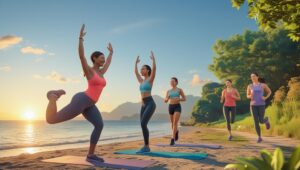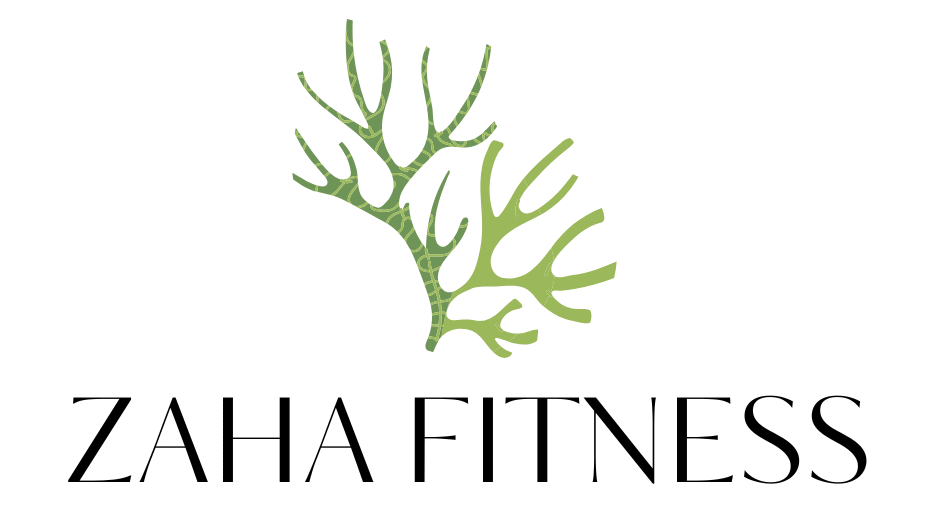Life today moves at a speed that can feel overwhelming. For people with demanding jobs, looking after personal health often slips to the bottom of the priority list. Long commutes, tight deadlines, back-to-back meetings, and family duties can easily consume the day. And when there’s little time left, exercise is usually the first thing to be skipped.
The problem is that too much sitting comes with hidden costs. When the body stays inactive for long stretches, fatigue creeps in, stress levels rise, weight starts to build up, and sleep becomes less refreshing. Over time, this slow lifestyle can quietly lead to bigger problems such as diabetes, high blood pressure, and heart disease.
The positive side? Staying active doesn’t mean spending two hours at the gym. A handful of small adjustments, done consistently, can fit movement into a busy schedule. Short, regular activities can lift your energy, clear your head, and keep your body strong—without getting in the way of your work or family time.
This guide will help you understand why movement matters and how to bring it back into your daily routine.

Why Movement Matters
Physical activity is much more than a fitness goal or a way to look good. Moving your body every day helps you perform and feel better in every area of life:
-
Restores energy: Activity improves blood flow, which helps you feel alert instead of sluggish.
-
Sharper thinking: Regular exercise keeps your brain active, making it easier to focus and remember things.
-
Stress relief: Even a short walk or stretch lowers tension and helps release stress.
-
Healthy weight management: Moving burns calories naturally, which makes it easier to maintain a healthy weight.
-
Better sleep: Active people tend to sleep deeper and wake up feeling refreshed.
-
Lower risk of lifestyle diseases: Exercise reduces your chances of diabetes, heart issues, and obesity.
-
A longer, better life: Staying active now helps you enjoy more energetic years later.
Health experts suggest at least 150 minutes of moderate exercise per week along with a few sessions of strength training. That number may sound big, but when divided into small chunks it becomes very doable.
Must Read: 8 Morning Routine Habits That Will Change Your Life
Busy Professional Physical Activity Tips
Practical Ways to Add Movement to a Busy Life
If your schedule is packed, the trick is to find quick chances to move throughout the day. These small efforts build up over time.
Must Read: Healthy Lifestyle Habits for Busy Professionals
Use Short Breaks for Quick Activity
You don’t need an hour-long workout. Even a few minutes count:
-
Do a mini set: 10 push-ups, 20 squats, 30 jumping jacks.
-
Try a 7-minute guided workout on your phone.
-
Walk around while on phone calls.
Doing three 10-minute bursts throughout the day gives you a solid half-hour of activity without disrupting your routine.
Must Read: Psychological Benefits of Exercise

Schedule It Like a Meeting
Waiting for “free time” rarely works. Instead, book movement into your day:
-
Stretch before you open your laptop.
-
Take a brisk walk during your lunch break.
-
Do a short workout with resistance bands after work.
Must Read: 9 Benefits of Protein for Health and Athletic Performance
Simple Desk Movements
Long periods of sitting can stiffen your muscles. Use these easy movements:
-
Lift your legs while sitting.
-
Stand up for chair squats.
-
Roll your shoulders and stretch your neck.
-
Do push-ups using your desk as support.
Just a few minutes every hour can refresh both body and mind.
Turn Commuting Into Movement
Your daily travel can also be a chance to stay active:
-
Walk part of the way instead of driving all the way.
-
Park your car farther from the office entrance.
-
Skip the elevator and take the stairs.
Even an extra 10 minutes of walking each day makes a difference.
Must Read: The 9 Best Diet Plans: Sustainability, Weight Loss & More
Move During Lunch
Your lunch break doesn’t have to be all about eating:
-
Take a quick walk outside.
-
Join a short yoga or stretching class.
-
Invite a colleague for a walking meeting instead of sitting in a room.
Must Read: Top 10 Proven Benefits of Healthy Eating

Change How Meetings Work
When possible, try meetings that don’t involve sitting:
-
Standing meetings keep everyone more alert.
-
Walking meetings are perfect for brainstorming and casual discussions.
These formats help you move more and often shorten the meeting time.
Must Read: Top 10 Best Supplements for Muscle Building
Use Technology to Stay on Track
Tech tools can help you remember to stay active:
-
Set hourly reminders to stand and stretch.
-
Use a smartwatch or fitness tracker to count steps.
-
Join online challenges with friends or coworkers.
Make a Small Exercise Corner at Home
You don’t need a full home gym. A few simple tools are enough:
-
Resistance bands
-
A yoga mat
-
A pair of dumbbells
Ten to fifteen minutes with these tools at home can be very effective.
Must Read: Morning Walk vs. Evening Walk – Which Is Better?
Include Family in Your Movement
Exercise doesn’t have to be solo:
-
Evening bike rides with the kids
-
A short walk with your family or pet
-
Playing active games in the backyard
This turns activity into fun family time.
Must Read: The 10 Best Vegan Meal Delivery Services in 2025

Use Weekends Wisely
If weekdays feel packed, focus on weekends:
-
Plan a hike or cycling trip.
-
Join a group fitness class.
-
Spend 30–60 minutes outdoors moving around.
Must Read: 12 Proven Ways to Lose Belly Fat Quickly
Keep Moving While Traveling
Business trips can interrupt routines, but you can still stay active:
-
Pack a resistance band—it’s light and takes no space.
-
Do squats, lunges, or push-ups in your hotel room.
-
Use hotel gyms whenever possible.
Must Read: 10 Best Health Benefits of a Morning Walk
Choose Activities You Enjoy
The best way to stay consistent is to pick something fun:
-
Dancing, swimming, or martial arts
-
Team sports in a local club
-
Group fitness classes like Zumba or spinning
If you enjoy it, you’re more likely to stick with it.
Combine Activity with Good Eating
Exercise works best when paired with smart eating:
-
Prepare simple, balanced meals.
-
Keep fruits, nuts, and protein bars handy.
-
Drink enough water.
-
Limit sugary snacks and too much coffee.
Good food gives your body the energy to move more.
Conclusion
You don’t need a gym membership or hours of free time to take care of your health. The real key is consistent small steps—walking during calls, stretching at your desk, taking the stairs, or playing with your kids. Over time, these actions add up and make a huge difference.
Remember, consistency matters more than intensity. Start small, stay steady, and soon these habits will become part of your lifestyle.
Your health isn’t optional—it’s what gives you energy for your work and joy in your life.
FAQs
1. How much activity should I aim for if my schedule is packed?
Aim for around 150 minutes a week. That could be 30 minutes five times a week or three 10-minute sessions a day.
2. Do short workouts of 5–10 minutes really help?
Yes. Research shows that even brief, regular exercise improves energy, mood, and heart health.
3. What’s one easy step I can start with today?
Start small: stand up every hour, walk during calls, or take the stairs instead of the elevator. These little steps grow into big results.
No matter how busy your day is, there is always room for movement. Start today—your future self will thank you.
What is the one small thing you can begin today to make your workday more active? Let us know in the comments below!”

Zain Ul Hassan is the founder of Zaha Fitness. He writes practical, research-backed articles on fitness, weight loss, and natural health. His goal is to help people live healthier lives using simple and effective tips.
